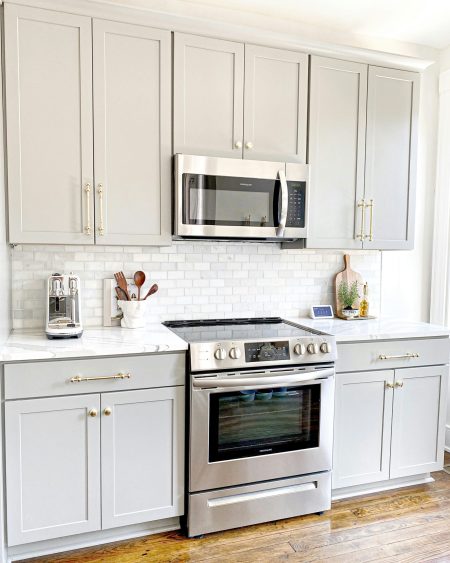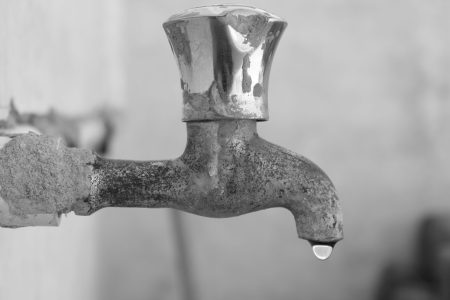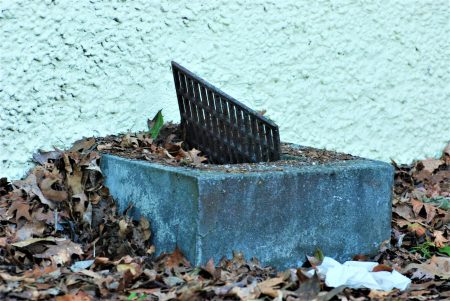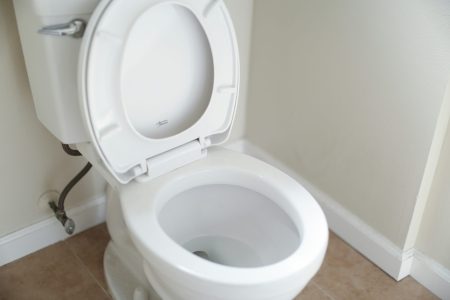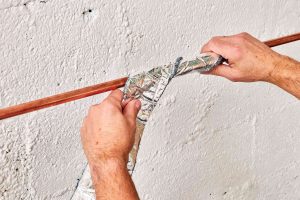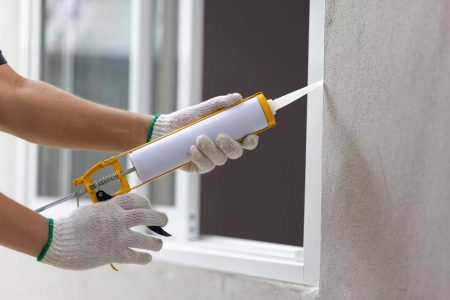If you’re a homeowner needing cash to fund a home renovation, consolidate debt, or cover another significant expense, a home equity line of credit (HELOC) might help.
A HELOC lets you borrow against your home equity to access cash when you need it — much like a credit card but without the high interest rates. The best HELOC rates also tend to be lower than home equity loan rates and personal loan rates, making HELOCs one of the most affordable borrowing options for homeowners.
Here’s what to know if you need cash and wonder, what is a HELOC, how does a HELOC work, and where can I find the best rates.
A HELOC is a revolving credit line that homeowners use for large expenses and to consolidate high-interest debt. With a HELOC, you leverage your home equity — the dollar amount of your home you own outright — to borrow money as needed. To calculate home equity, subtract your mortgage balance from your home’s value. For example, if the value of your home is $400,000 and you owe $300,000, your equity is $100,000.
While a HELOC can be a smart way to tap home equity, it isn’t risk-free: Your house is collateral for the line of credit, so your lender can foreclose on the home if you fall behind on payments. For this reason, it’s essential to understand how a HELOC works and weigh the pros and cons before deciding if a HELOC is right for you.
TIP: HELOCs and home equity loans let you access the equity you have built in your home, but they work differently. With a HELOC, you borrow funds as needed during a draw period before entering a variable-interest repayment period. With a home equity loan, you get an upfront lump sum that you start repaying right away at a fixed interest rate.
With a HELOC, you borrow against your home equity (up to your approved limit), using the house as collateral. Throughout the draw period, you can access your HELOC funds via credit cards, checks, online transfers, or in-person cash withdrawals from local branches. The draw period commonly lasts five to 10 years, during which you make minimum payments that include interest only — or a combination of principal and interest.
As you repay the balance, the available credit is replenished — meaning you can borrow, repay, and repeat as often as you wish during the draw period. This is similar to a credit card, where you can charge up to your card’s limit, pay down some (or all) of the balance, charge up to the limit again, and so on.
When the draw period ends, you enter a 10 to 20-year repayment period. During this phase of the HELOC, you can no longer withdraw money, and you focus on paying off the principal and interest. HELOCs typically involve variable (not fixed) interest rates, so your monthly payment will increase or decrease periodically as rates fluctuate. Still, many HELOCs have periodic and lifetime caps that limit how much interest rates can increase yearly and over time.
TIP: According to the IRS, you can deduct the interest paid on up to $750,000 ($375,000 if married filing separately) of home equity loans or HELOCs if you use the money to buy, build, or substantially improve the home securing the loan. To claim the deduction, you have to itemize your tax return.
HELOC limits vary by lender, but most let you access up to 80% of your equity — or $80,000 for every $100,000. For example, say your home’s value is $400,000, and you owe $300,000 on your mortgage. You would have $100,000 of equity, so you could access up to $80,000 with a HELOC (0.80 * $100,000).
Of course, remember that your borrowing power could be higher or lower depending on your credit score, ability to repay the loan, and other financial factors.
TIP: Equity rises when your mortgage balance decreases, or your home’s value increases. To reduce your mortgage, you can make a larger down payment, pay more than the minimum monthly payment, or make extra payments. Your home’s value can increase due to real estate market fluctuations and through home improvements — especially those with high returns on investment (ROI).
Getting a HELOC is similar to applying for a mortgage. The lender reviews your credit history and financial details and gets an appraisal to determine your home’s value. While the process can vary by lender, here are the basic steps for getting a HELOC:
-
Review (and boost) your credit. You generally need a credit score of at least 640 to qualify, but you can get the best HELOC rates and terms with scores above 700. Consider taking steps to improve your credit score before applying for a HELOC if your score could be better.
-
Compare offers. Shop around with at least three lenders to compare rates and terms. Even slight differences in interest rates can save (or cost) you thousands of dollars over the life of the loan.
-
Apply for the HELOC. You can apply for a HELOC online, in person, by mail, or over the phone. Be ready to provide documentation substantiating your identity, income, employment, assets, and debts.
-
Wait for a decision. The lender reviews your information and the home appraisal report to determine if you qualify for a HELOC and, if so, how much equity you can access.
-
Close on the loan. If all goes well, your lender will give you final approval, and you can set a closing date. You’ll sign the paperwork, finalize the financing, and officially open the HELOC.
Like other loans, HELOCs have advantages and disadvantages. Here’s a rundown of the main pros and cons to consider.
A HELOC can be an excellent option if you need cash and have at least 15% to 20% equity in your home. Of course, your house is on the line, so it’s best to use the funds to increase your home’s value or improve your financial situation in some other way.
HELOC and Home Equity Loan FAQs
What are good home equity loan rates?
The best home equity loan rates can vary by lender. The average national rate for a home equity loan in June 2023 was between 7.52% and 9.81%. To find the most competitive rates, it’s best to do your research and shop around for the right lender for your needs.
What are the best HELOC rates?
As of June 2023, the average national rate for a home equity line of credit (HELOC) is between 7.79% and 9.78%. To get the best HELOC rates you will need to have a good credit score, a low debt-to-income ratio, a high enough income, and a reliable payment history. Even if all of these factors apply to you, it’s important to get quotes from at least a few lenders.
What is the difference between a home equity loan and a HELOC?
Trying to figure out the pros and cons of a home equity loan vs a heloc can be tricky. Both of these products let you borrow against your home equity — that is, your home’s value, minus what you still owe on the mortgage — giving you cold, hard cash in return. You can then use that money to pay for renovations, cover unexpected bills or expenses, consolidate debt, or manage any other financial need you might have.
A home equity loans let you turn your home equity into a one-time lump sum payment. You then repay the loan via fixed monthly payments over an extended period of time — usually 10 to 30 years. A home equity line of credit is another option for borrowing against your home equity. Unlike home equity loans, these work more like credit cards, allowing you to withdraw money, pay some back, and withdraw more when you need it. Typically, HELOCs come with a 10-year draw period, which is when you can withdraw money from the credit line. During this time, you’ll usually pay only interest on the funds you pull out.
What is a fixed-rate HELOC?
A fixed-rate HELOC is considered a hybrid product because it combines a home equity loan’s fixed interest rate with a HELOC’s credit line. You can withdraw money (up to your credit limit) just like you would with a traditional HELOC. But unlike a variable HELOC, you lock in all or a portion of your balance at a fixed interest rate during the draw period. This can make it easier to plan and budget while protecting you from future interest rate hikes.
What is the best HELOC strategy?
Just because you can use a HELOC for anything doesn’t mean you should. After all, your house is on the line, and you risk losing it to foreclosure if you default on the payments. For this reason, the best HELOC strategy is to use the HELOC to boost your home’s value or strengthen your financial situation in some other way.
Is HELOC interest tax deductible?
The interest you pay on a HELOC can be tax-deductible — but not always. It all depends on what you use the funds for. According to the IRS, you can only deduct the interest you pay on a home equity loan or line of credit if “the borrowed funds are used to buy, build, or substantially improve the taxpayer’s home that secures the loan.” Here’s a closer look at the nuances involved in the question of whether heloc interest is tax-deductible.
How can I increase my home’s value?
If you’re researching home equity loans and HELOCs, you’ve probably started wondering how you can increase your home’s value. Check out our guide for tips, including investing in smart energy, replacing your roof, and refinishing hardwood floors.
What is a home improvement loan?
A home improvement loan is an unsecured loan that you can use to pay for various home repairs and renovations — such as a roof replacement, furnace/HVAC repairs, kitchen or bathroom remodel, deck addition, solar panel installation or landscaping. Loan amounts range from $3,000 to $100,000, which you repay with interest in monthly installments over one to five years.
How does a home equity loan work?
Once you’re approved for a home equity loan, your lender gives you the funds as an upfront lump sum. This makes home equity loans ideal for homeowners who want to borrow a specific amount for a major project or big one-time expense. To repay the loan, you make fixed monthly payments (with interest, of course) over a set term ranging from five to 30 years.
TIP: Remember that home equity loan payments are in addition to your usual mortgage payments, so budget accordingly. If you default on the loan payments, your lender can foreclose on your home.
How can I get a home equity loan?
While the process varies by lender, this is generally how to get a home equity loan:
-
Calculate how much equity you have in your home.
-
Decide how much you need to borrow.
-
Compare borrowing limits, features, terms, and customer reviews across lenders.
-
Get quotes from a handful of lenders that meet your needs.
-
Choose the lender with the lowest rate offer and submit a formal application, which will require a hard credit check.
-
Schedule an appraisal.
-
Wait for approval and close on your loan.
-
Begin repayment.
Editorial Disclosure: All articles are prepared by editorial staff and contributors. Opinions expressed therein are solely those of the editorial team and have not been reviewed or approved by any advertiser. The information, including rates and fees, presented in this article is accurate as of the date of the publish. Check the lender’s website for the most current information.
This article was originally published on SFGate.com and reviewed by Lauren Williamson, who serves as Financial and Home Services Editor for the Hearst E-Commerce team. Email her at [email protected].
Read the full article here




